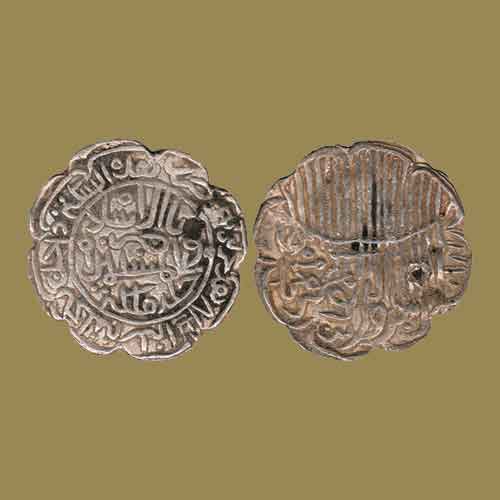Tughra Calligraphy on Indian Coins
2018-02-22 Thu
After the advent of Islam, the art of calligraphy spread to West Asian & Central Asian countries and to Indian subcontinent. This newly emerged art achieved the status of such an important art that without its mention the cultural history of medieval India is considered to be incomplete.Indo- Islamic architecture, royal stationary, royal orders (farmans), seals, wall hangings (waslis), fabrics, books (in manuscript form) etc. were evidently influenced by this art. The other area which is highly influenced by the art of Islamic calligraphy is the medieval coinage.
Various style of calligraphy is noticed on Indian coins. This style may be mentioned as Kufic, Eastern Kufic, Thuluth, Nashk, and Tughra.
One of these beautiful calligraphies is Tughra. Taghara means bird in Arabic and the word for the calligraphic style of Tughra is derived from this very word. Tughra is a form of calligraphy in which the names of Allah, Quranic verses, King’s name, emblem of government etc. are written in bird or animal form or in beautiful geometric arrangement.
The best example of Tughra calligraphy can be seen on the coins of Mughals, Bengal Sultanate, coins of Mir Usman Ali Khan of Hyderabad, Gujarat sultanate and Jaunpur Sultanate and others.
A beautiful heavy scalloped Tanka of Jalal-ud-Din Muhammad minted at Banjalia (Gateway of Bengal Mint), is one the best example of coins with Tughra style calligraphy. This coin was sold for INR 2,20,000 by Todywalla Auctions.
Image Courtesy: Todywalla Auctions
Latest News
-
Gold Pagoda of Vijaynagar Empire King Deva Raya I
2024-04-10 WedKing Deva Raya I of the Vijayanagara Empire was a patron of Kannada literature and architecture. He ...
-
Silver Denarius of Septimus Severus
2024-04-05 FriLucius Septimius Severus served as the Roman emperor from 193 to 211 AD. Severus sat on the throne o...
-
Extremely rare 'Malaharamari' type Gold Gadyana of King Guhalladeva-III Sold for INR 611000
2024-04-03 WedTribhuvanamalla, also known as Guhalladeva III, was the ruler of the Kadamba dynasty. His reign coin...
-
90 Years of RBI
2024-04-02 TueOn 1st April, PM #Modi unveiled a special commemorative coin marking 90 Years since the foundation o...
-
Silver Denarius of Julia Mamaea
2024-04-02 TueJulia Avita Mamaea, a Christian Syrian noblewoman, was the mother of Roman Emperor Alexander Severus...

